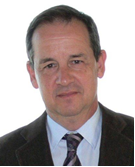

Antonio Pérez Turró (AES): “The big challenge in 2023 will be to keep pace with threats”
The big challenge in 2023, but also in the coming years, will be to keep pace with the threats that evolve every day at a frantic pace. So says Antonio Pérez Turró, Chairman of the Spanish Association of Security Companies (AES), as he explains the security sector's forecasts for the final quarter of the year and 2023.
With are the forecasts for, and how is the security sector tackling, the second half of 2022?
If I had to give a short answer, I’d simply say vigorously and with high expectations, both in terms of volume of needs and expansions of new security solutions. Although there’s always a `but´. This rotund response might have to be put on hold or, in the best case scenario, slowed down due to the many problems facing all commercial activities at present.
After the pandemic we suffered from a shortage of supplies and raw materials that we still haven’t fully recovered from. As if that weren’t enough, rampant inflation is placing pressure on the margin scale that’s needed for the economic development of companies and workers, restricting consumption and, consequently, security facilities and services. The announcement of an increase in interest rates, while it will ease inflation, won’t help us meet our targets.
Even with all this, under no circumstances do I want to send a pessimistic message. The sector is strong and mature as it has shown in these difficult and changing times. Good evidence of that can be found in the recent success of SICUR 2022. We’re adapting and growing. In this second part of the year too.
In this regard, what new needs have arisen in the sector this year?
Rather than new needs, they are needs that are constantly, or almost constantly, evolving. When I mentioned volume of security needs earlier, our challenges are inherent in this growth in demand, as are our opportunities and solutions. Sometimes they are small but important nuances to traditional security: physical and digital. Others are an essential combination of both: physical barriers, electronic detection (both at a level accredited by standards and the corresponding tests) and rapid transmission and reliable reception without interference.
As you may assume, all of these traditional elements, but with latest-generation technology, link in with cybersecurity and that broad area of action. In fact, you can no longer talk about integrated or complete security without cybersecurity. It hasn’t emerged this year, but the development has been exceptional, at pace with the threats or, unfortunately, just behind them.
And in this new context, what challenges will cybersecurity pose in 2023?
I’d refer back to the final words of my earlier response. The big challenge in 2023, but also in the coming years, is not cybersecurity, which is already here to stay, but keeping pace with the threats that evolve every day at a frantic pace. We have to endeavour to look beyond and make sure our solutions and services have the detection methods, and progress towards imaginative technological solutions and also solutions based on awareness. It’s not easy and it’s not a question of a small group of people but requires effort from many people.
Because it’s something we’ve been familiar with at AES for some time, we already set up our Cybersecurity Division some years ago, staffed with top experts who have been working tirelessly to propose actions and solutions for the sector and for society at large. Some very interesting works have been published, which I’d ask your readers to look at. Ah, and it’s not just about 2023 and the companies; it’s something that each and every one of us are grappling with. Everyone has to put their system on alert so as not to suffer a cyberattack.
Finally, I’d like to thank IFEMA MADRID for the opportunity these interviews give us to communicate with all the stakeholders in the security sector.





